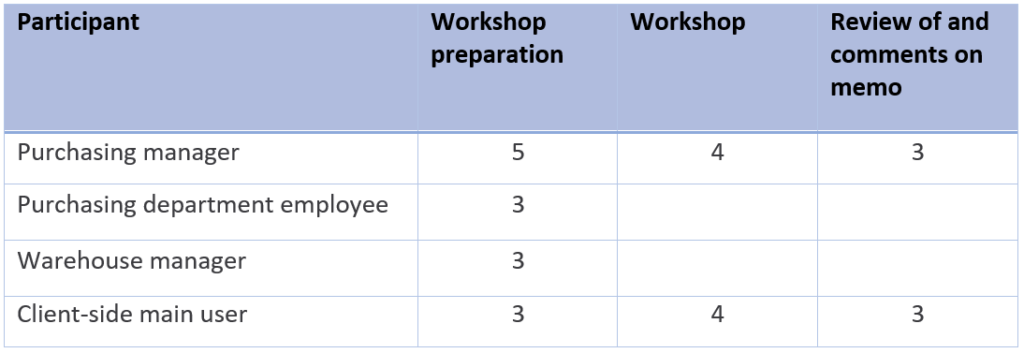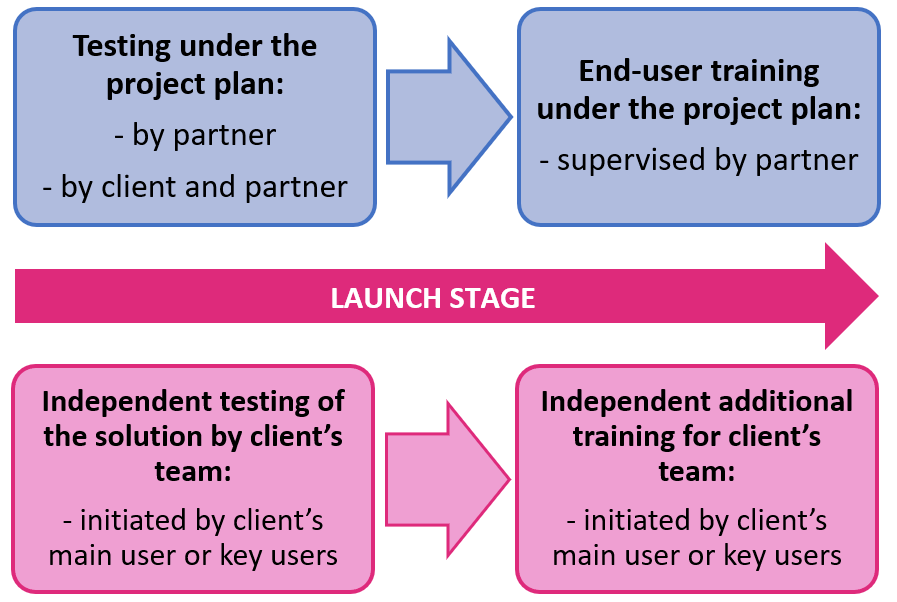Deployment of ERP software: How much should the client contribute?
Source: Äri-IT autumn 2021
Author: Leho Hermann, sales manager at BCS Itera
Just like it takes two to tango, the deployment of enterprise resource planning (ERP) software is a two-party project that requires a significant contribution from both parties. The emphasis is on ‘significant’, as the client often underestimates their role in the process.

Since ERP projects are far from an annual affair, it is understandable if a company has no experience with them and does not know how to plan its labour. To avoid problems, it is already advisable to raise this topic with your partner at the sales stage and talk things through to get a better understanding of what kind of skills are needed from people at each point in time.
The rule of thumb says that the client should contribute at least as many hours as the deployment partner. For example, if the project is planned to last 1,000 hours, then the same volume is expected from the client’s team.
Let’s take a closer look at the usual stages of an ERP project (keeping in mind that the methodology and stages may differ somewhat depending on the partner).
ANALYSIS STAGE
The mapping of problems and future needs is important groundwork for any project. This can be done both with your own resources and with the help of your partner. In both cases, the key users must be involved and their concerns and visions must be heard, ordered, and documented.
For example, if the project plan includes 4 hours for a workshop on the purchasing process, then this is only part of the necessary contribution. In order for the workshop to be effective, it is necessary to prepare for it (not alone, but by involving the key participants in the process), then carry it out, and finally review the memo and comment on it if necessary. For example, the contribution to one topic (purchasing) in hours could be divided as follows:
The 4 to 8 hours allocated to one topic in the partner’s project plan or offer can mean a 3 to 4 times greater contribution for the client’s team. If the client does not make provisions for this and it comes as a surprise to their employees at the start of the project, there is already a risk that the project will not proceed successfully.
DATA TRANSFERS
An ERP project results in the production of data that are used for making management decisions at various levels. As such, it is paramount for the source data that will be used in the ERP software to be accurate and of high quality from the get-go. Otherwise, one error will generate many more, finding and correcting which will cost you several times more time and money.
Just as the duration of the analysis stage is estimated by a single number in the partner’s offer, but actually takes much longer, the creation of high-quality data also means a considerably greater contribution for the client’s team. The deployment partner’s time estimate essentially reflects the importing of data prepared by the client into the new solution under the assumption that the data are accurate. This requires a good deal of preliminary work from the client, because only the people who use the data on a daily basis will know which data are accurate. The partner’s share of the work is limited to technical importing operations.
Data preparation means retrieving it from the old system, removing excess or obsolete data, filling in additional fields for the new solution, etc. If the company was previously using multiple programs and a large number of spreadsheets, this task becomes even more time-consuming.
For an ERP project involving all processes, depending on the (old) systems, data preparation may take dozens and dozens of hours and is a job that cannot be done by the deployment partner.
CONFIGURATION AND CUSTOMISATION STAGE
This is one of the most active stages, which includes many joint workshops, where basic knowledge is acquired about the new solution, the nature of the future processes is discussed, and the configuration operations agreed upon during the analysis stage are carried out.
Here, too, the client should not expect to get away with simple participation in workshops, but should go over what was talked about or try it out in the solution independently or together with colleagues after each workshop. This will help reinforce what you have learned and suitably prepare you for the next workshops.
There is often some debate about who should draw up the user manuals. Experience shows that the best user manuals are created by the client’s key users, since they know the processes and nuances that should be addressed in the manuals better than anyone else. The time cost related to this too should therefore be kept in mind.
LAUNCH STAGE
After all of the previous stages have been successfully completed, it’s time for a particularly critical phase: testing the solution, which requires the involvement of both the partner and the client’s employees. This will provide you with assurance that all of the above has been done correctly and as agreed.
This stage also includes any remaining future users, who will be trained and acquainted with the new solution.
As regards the time cost of this step, there is a saying that there is no such thing as too much testing and training, which means that you should allocate as much time for it as you can reasonably afford. The client should fully test all of their processes and special nuances to be 100% certain that everything is working properly.
In one pan-Baltic retail chain project, for example, our client decided to allocate additional time for independent testing (repeated performance of processes in the new software; in-store trial days, where transactions were made both in the old and new software). Thanks to this, we only received a couple of questions from the users on go-live day, and the project was launched completely painlessly.
We recommend conducting several training sessions for the users to allow them to fully grasp the new information. In achieving this, the best training providers might well be your in-house staff, who know every aspect of your daily operations and can draw on that knowledge.
CONCLUSIONS
- No part of an ERP project is less important than any other – every stage requires a good deal of contribution to ensure that the transition to the new solution is as smooth and free of issues as possible.
- Keep in mind that an ERP project is the project of the client, not the partner, i.e. the client should be prepared to play a major role in the implementation of the project. For instance, the post-implementation summary of Premia Grupp showed that in their ERP project the client contributed 2/3 and the partner 1/3 of all input.
- When preparing an ERP project, it is crucial to make provisions for the participants and their involvement, so that the need for this does not come as a surprise. To this end, the client should co-operate actively with the deployment partner in the preparation of the project plan.


